
If you plan your garden well, growing vegetables isn’t only a summer activity. In order to make the most of the growing space you have available, you can think about ways to make it possible to grow your own fresh produce all year round.
You may be surprised by this, but even in a cooler temperate climate, there are vegetables to grow over winter. Some will overwinter in your garden and be ready in the spring, while others can be harvested over the colder months.
Growing Vegetables Year Round
If you get frosts where you live and have a shorter growing season, then you may wonder how you could possibly find vegetables to grow over winter. The key to success lies in finding ways to give your plants a little extra protection from the cold or wet weather.
You can provide protection for overwintering plants by:
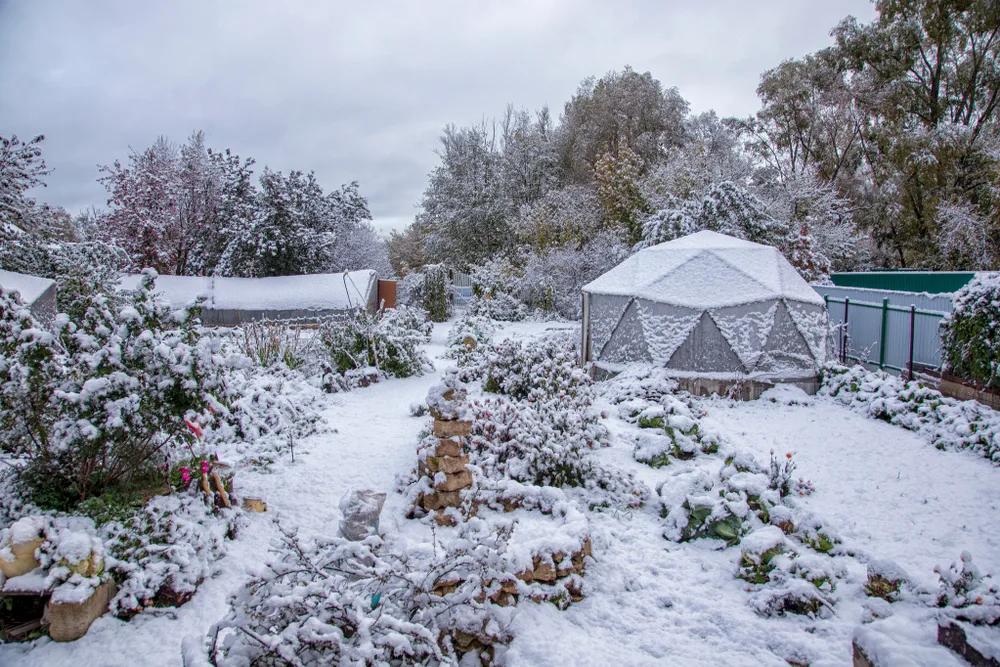
- Buying or building a greenhouse, hoop house, cold frame, or polytunnel. And if necessary, learning how to heat your greenhouse on the coldest days.
- Placing mini tunnels, row covers, or cloches over beds, containers, or individual plants.
- Wrapping plants with horticultural fleece, or a natural fabric alternative.
- Protecting plant roots from frost with a thick layer of straw or another organic mulch.
- Creating hotbeds for your plants to warm the growing medium from beneath. (A hotbed is created by combining straw and manure or other organic matter that will compost in place, generating heat as it does do.)
- Establishing windbreaks, shelterbelts, windbreak hedging, and other protective plantings to shield plants from the prevailing wind, which can knock plants down in winter and reduce temperatures.
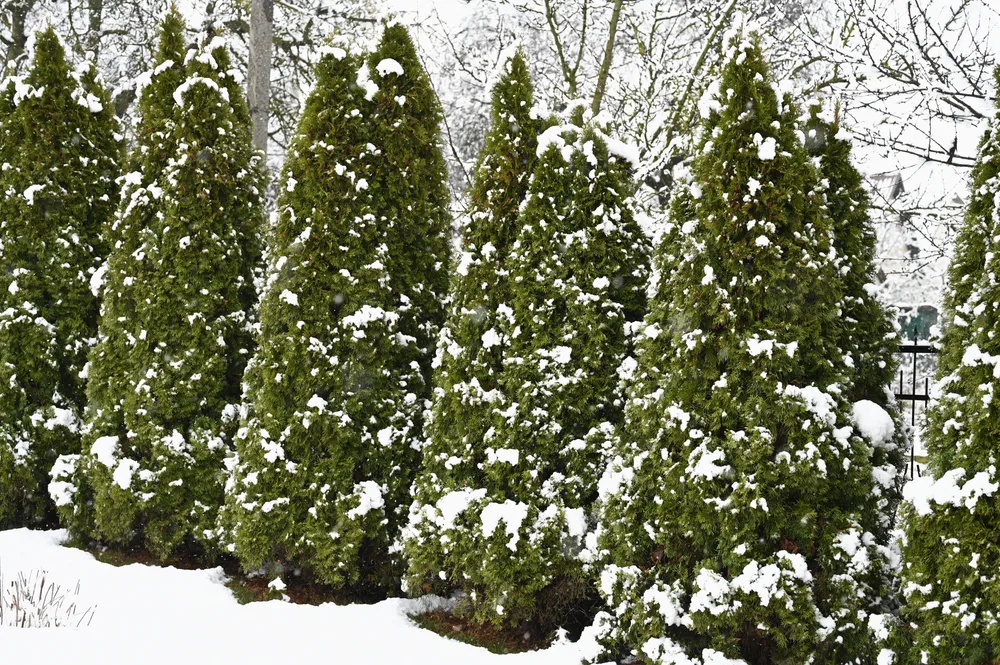
Choosing Vegetables to Grow Over Winter
Another important element for success is choosing the right vegetables to grow in winter. It’s vital not only to choose the right vegetables, but to select varieties of those vegetables that are bred to survive in your climate and the environmental conditions where you live.
It’s also important to realize that your planning for winter should begin right back in the spring.
In the spring, you can begin to sow a range of vegetables that will be harvested up until mid-winter. You can then continue on from there, planting more vegetables for harvesting in winter, or to overwinter in your garden the rest of the year.
To help you plan for year-round growing and eating, here are some lists of the vegetables that you should consider sowing during the different seasons:
1. Winter Vegetables to Sow in the Spring
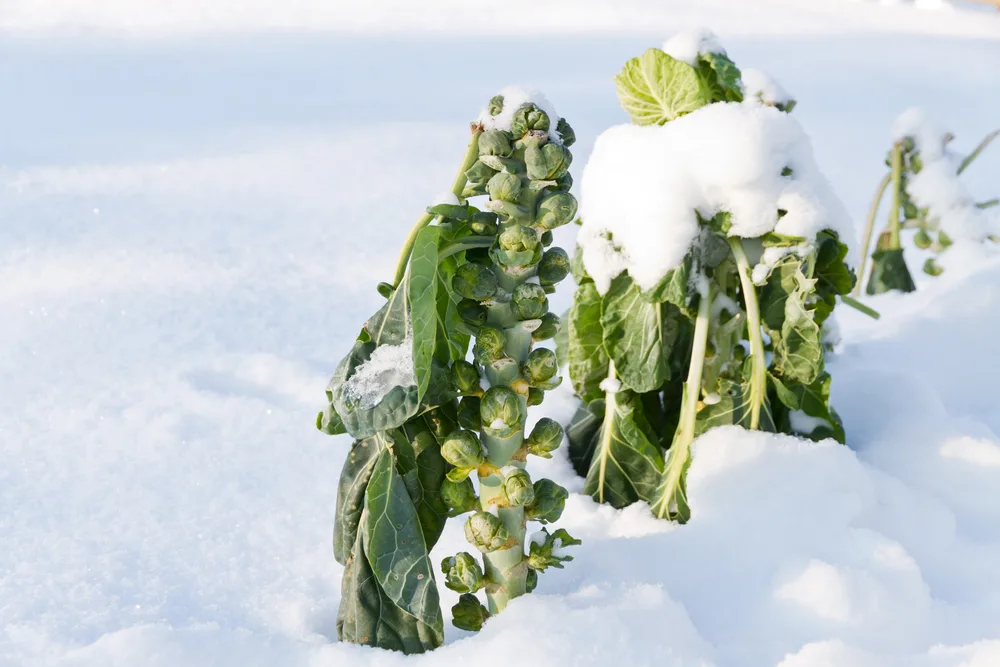
In the spring, there are two different categories of plants that you might sow for winter. The first batch is things that you’ll sow to harvest and eat during the winter. The second batch is vegetables that you’ll sow in spring and lift in the fall to store and eat over the winter months.
In this article, we are concerned with the former, which can survive in your garden over the winter without being lifted for storage, especially if you offer some form of protection from the worst of the winter weather.
Some options that you can consider sowing in spring to eat over the winter months are:
- Brussels sprouts
- Kale/ winter cabbages
- Perennial vegetables
Perennial vegetables are a particularly interesting option since these will not only provide you with a food source for one winter but will feed you over the coldest months year after year. There a number of perennial greens – especially a range of perennial kale varieties, that could provide you with leafy greens in the winter if given some protection against frost, snow and winter storms.
2. Winter Vegetables to Sow in the Summer
In summer, it’s not too late to sow leafy greens and other crops for the winter months. While most plants will go dormant during the coldest and darkest part of the year in temperate climes, sowing them in summer will allow them to reach a reasonable size before the first frosts.
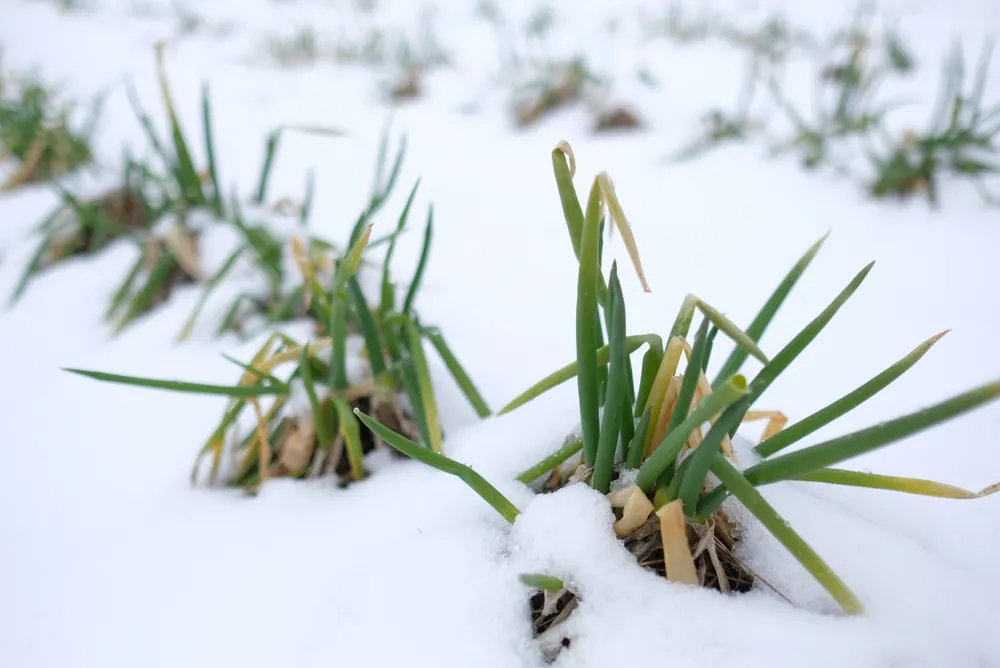
The plants can then survive throughout the winter with some cover, and protection to prevent frost damage, and can be gently harvested right through to spring if properly tended.
Vegetables that you could consider sowing in summer include:
- Brassicas
- Chard
- Chicory
- Asian greens (pak choi, mizuna, mibuna etc.)
- Spinach
- Winter lettuces
- Spring onions
- Carrots
- Beets
- Turnips
3. Winter Vegetables to Sow in Early Fall
When summer is over, you may think that it’s far too late to sow or plant anything. But if you have some protection for plants then it’s not too late to sow some crops. These crops won’t feed you over the winter months but can survive with some protection over the winter months to provide an earlier crop next spring.
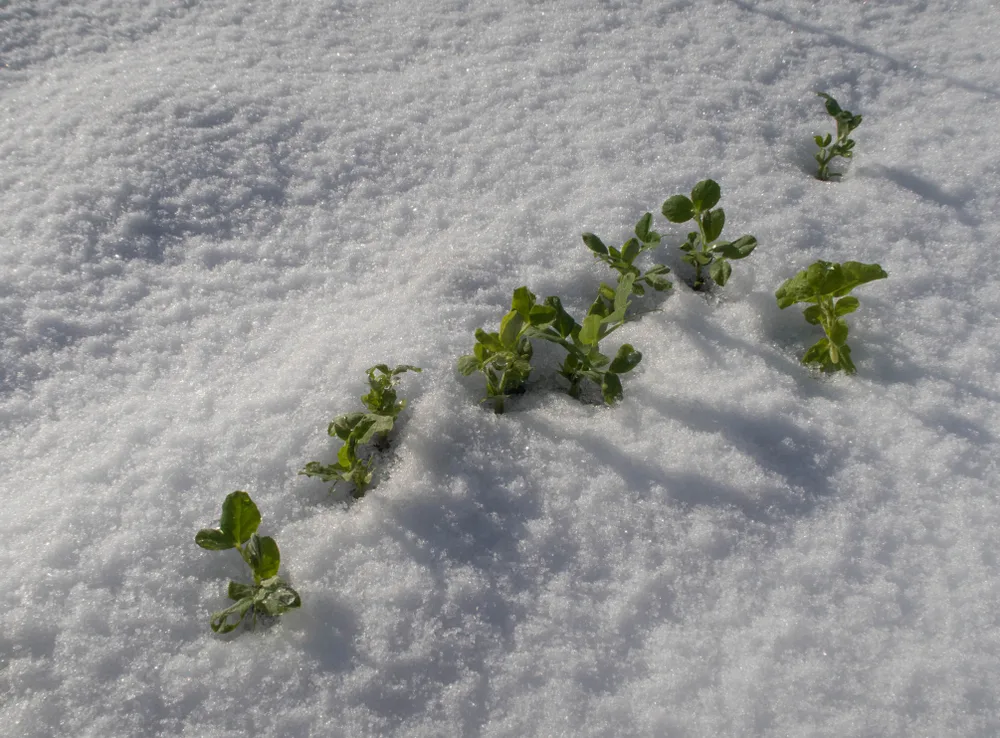
For example, in early fall you should consider planting:
- Winter peas
- Fava beans (an overwintering variety)
These crops will get going a little before they stop growing over the coldest part of the year. One good thing about sowing these crops in your growing areas over winter is that they also collaborate with bacteria in their roots to fix nitrogen from the air. So they will add fertility to your growing areas.
4. Winter Vegetables to Plant in Late Fall
Even in late fall, it’s not too late to plant something in your garden. You could consider planting:
- Overwintering onion sets
- Overwintering garlic
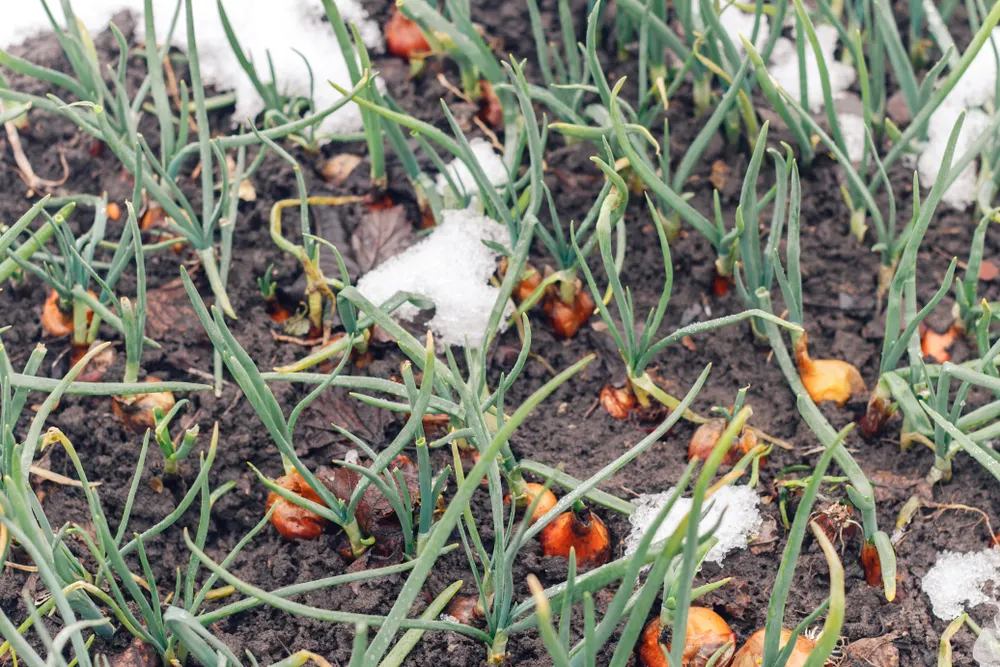
Even in the coldest areas, you can overwinter onion sets (small immature onion bulbs) or garlic with protection to prevent waterlogging of the soil. These will remain in the soil over the winter months, forming roots, and get started earlier in the spring. (Growing them undercover will provide an even earlier crop.)
5. Vegetables to Sow in the Middle of Winter
You may be amazed to learn that even in mid-winter, you can still think about sowing seeds. Though you’re unlikely to be able to sow seeds outdoors in a temperate climate winter, you can still sow and grow indoors, on your windowsills or another bright spot.
Mid-winter (around New Year) is a good time to sow:
- Tomatoes
- Peppers
- Eggplants
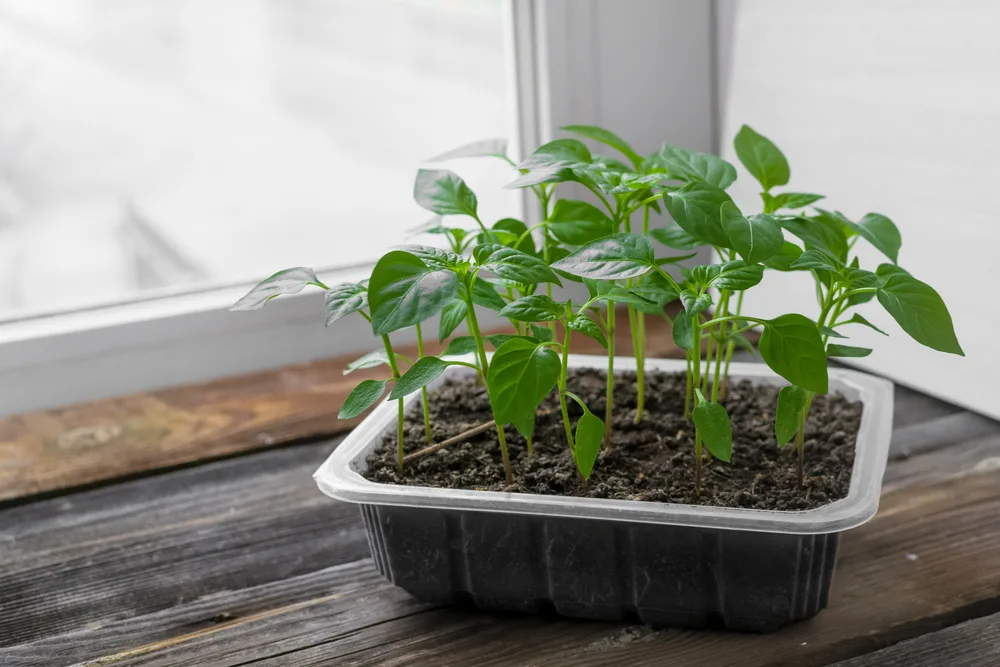
Sowing these early can allow you to get a better harvest by the end of the growing season. You will need to have a warm spot for germination to take place. (A home-made propagator could be fine for the purpose.) After this, a sunny spot indoors should be fine.
Simply pot up your tomatoes and pepper plants as they grow, and then you can transplant them into your garden (or greenhouse etc.) when the weather warms.
The main challenge with growing seedlings at this time of year is the lack of light.
If this is an issue where you live, low-energy LED grow lights could provide a solution.
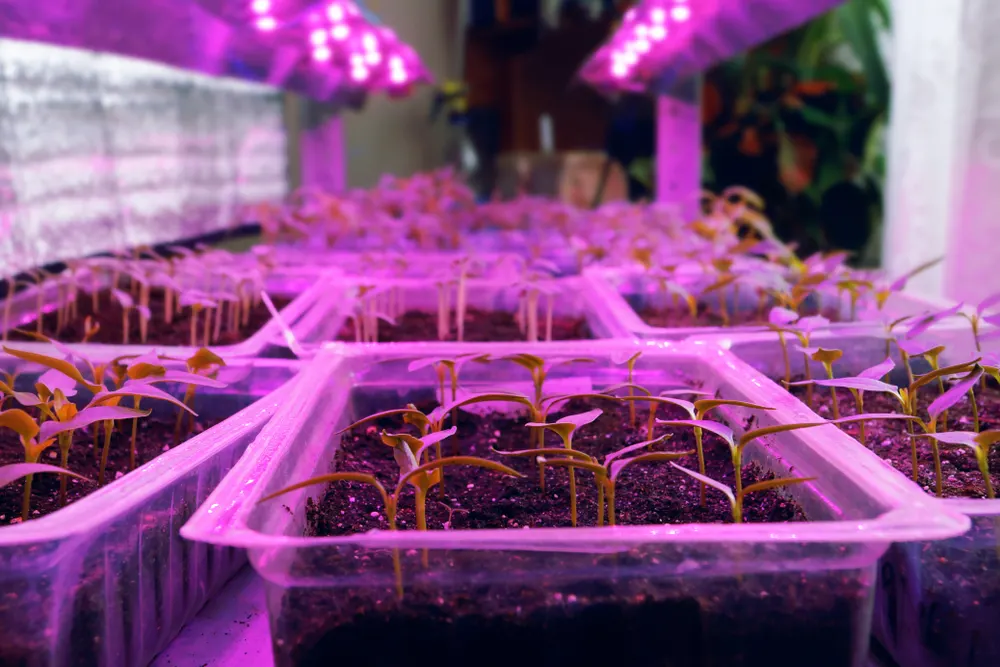
Winter is also a good time to begin ‘chitting’ potatoes. This simply involves placing seed potatoes on a cool but bright windowsill and allowing the ‘chits’ or green shoots to form. Chitting potatoes is not essential but can give your potato plants a head start when it comes to planting them out.
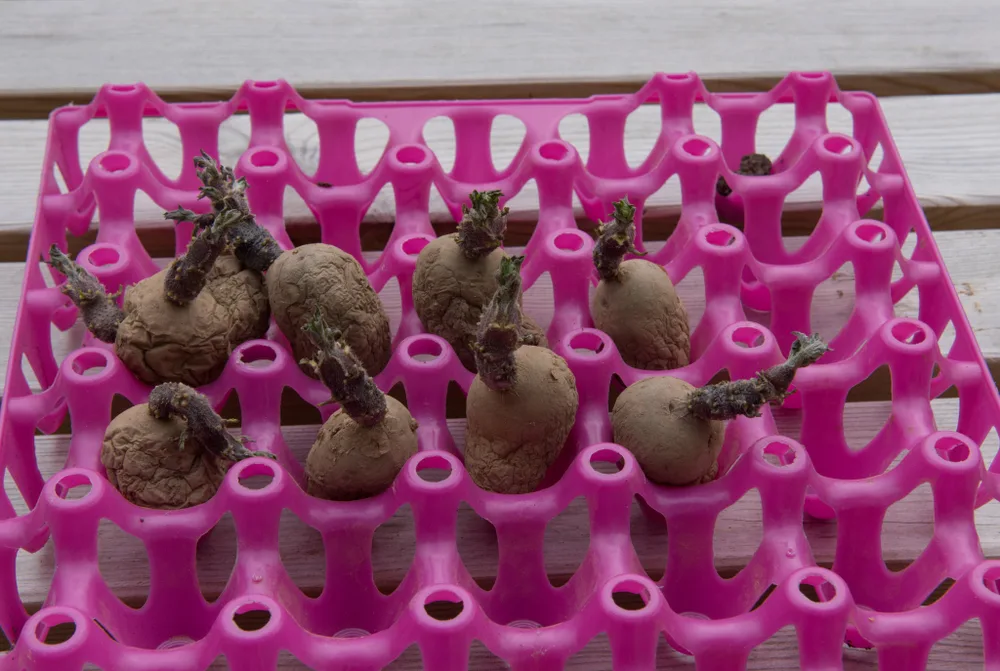
Plan throughout the year and you can have a range of plants growing in your garden and home, even in the middle of winter, especially if plan your garden well and provide protection from whatever the weather may bring.

Get the famous Rural Sprout newsletter delivered to your inbox.
Including Sunday ramblings from our editor, Tracey, as well as “What’s Up Wednesday” our roundup of what’s in season and new article updates and alerts.

